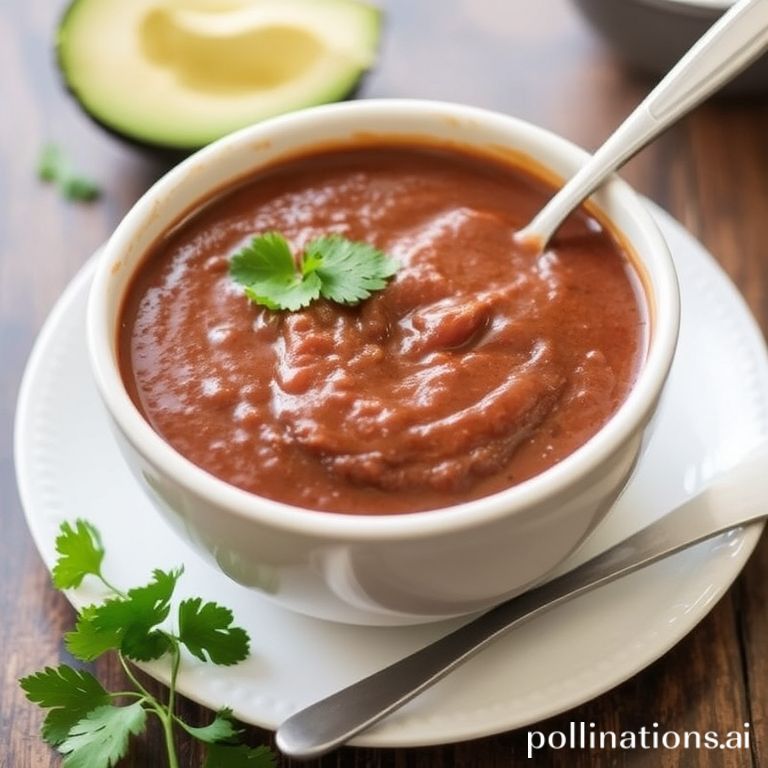Mexican mole (pronounced “moh-leh”) is more than just a sauce; it’s a culinary journey through Mexico’s rich history and diverse ingredients. Often called the national dish of Mexico, mole comes in various forms, each region boasting its unique take on this complex and flavorful concoction. For beginners, the world of mole might seem intimidating, but fear not! This guide will break down the basics, explore the different types, and offer tips for enjoying this iconic dish.
From its pre-Hispanic origins to its modern-day variations, mole represents a fusion of indigenous and European influences. It’s a testament to the patience and artistry of Mexican cooks, who skillfully blend chilies, spices, nuts, seeds, and even chocolate to create a truly unforgettable flavor experience.
What Exactly is Mole?
At its core, mole is a sauce made from chilies, spices, fruits, and often chocolate. The base typically includes one or more types of dried chilies, which are toasted and ground into a paste. This paste is then combined with a complex blend of ingredients, which can include nuts, seeds, spices, tomatoes, onions, garlic, and even stale bread or tortillas for thickening. The mixture simmers for hours, sometimes even days, to allow the flavors to meld and deepen. While chocolate is a common ingredient, it’s important to note that mole is not a sweet dessert sauce; the chocolate is used to balance the flavors and add richness.
Key Ingredients in Mole
- Chilies: Ancho, pasilla, mulato, and chipotle are some of the most commonly used chilies, each contributing a unique level of heat and flavor.
- Spices: Cinnamon, cloves, cumin, and coriander are frequently used to add warmth and complexity.
- Nuts and Seeds: Almonds, peanuts, sesame seeds, and pepitas (pumpkin seeds) provide richness and texture.
- Chocolate: Mexican chocolate, often with a slightly grainy texture and hints of cinnamon, is a classic addition.
Different Types of Mole to Explore
The beauty of mole lies in its diversity. Each region of Mexico has its own specialty, and the variations are endless. Here are a few of the most popular types:
Mole Poblano
Perhaps the most famous of all, Mole Poblano hails from the state of Puebla. It is characterized by its deep, rich, dark color and its complex flavor profile, which includes over 30 ingredients. It’s often served with turkey or chicken.
Mole Negro
Originating from Oaxaca, Mole Negro is known for its intensely dark color and smoky flavor. It often includes ingredients like hoja santa (a fragrant herb) and is considered one of the most complex and challenging moles to make.
Mole Coloradito
Also from Oaxaca, Mole Coloradito is a reddish-hued mole with a slightly sweeter flavor than Mole Negro. It often includes tomatoes and plantains, giving it a vibrant color and a fruity undertone.
Mole Verde
In contrast to the darker moles, Mole Verde (green mole) gets its color and flavor from fresh herbs like cilantro, parsley, and epazote. It’s often lighter and fresher in taste, making it a popular choice for seafood or vegetables.
How to Enjoy Mole
Mole is typically served as a sauce over meat, poultry, or vegetables. Here are a few popular ways to enjoy it:
- Enmoladas: Tortillas dipped in mole, filled with cheese or chicken, and baked.
- With Chicken or Turkey: A classic pairing, especially with Mole Poblano.
- Over Vegetables: Mole can elevate simple vegetables like potatoes, squash, or green beans.
- In Tamales: Mole can be used as a flavorful filling for tamales.
Tips for Beginners
Feeling overwhelmed? Here are a few tips to get you started on your mole journey:
- Start with a prepared mole paste: Many Mexican grocery stores sell mole paste or powders, which can be a convenient way to experience the flavor without making it from scratch. Simply add broth and simmer to create a sauce.
- Don’t be afraid to experiment: Once you’re comfortable with the basics, try adding your own twist to the recipe.
- Taste as you go: Mole is all about balancing flavors, so taste it frequently and adjust the seasonings as needed.
- Be patient: Mole takes time and effort, but the results are well worth it.
Conclusion
Mexican mole is a culinary masterpiece that reflects the country’s rich cultural heritage. While it may seem daunting at first, understanding the basics and exploring the different types can unlock a world of flavor. Whether you choose to make it from scratch or start with a prepared paste, the journey into the world of mole is sure to be a delicious and rewarding one. So, embrace the complexity, savor the flavors, and enjoy the magic of Mexican mole!
Ready to continue your culinary journey? Share your favorite mole experience in the comments below and don’t forget to explore more authentic recipes on Life in Mexico!
IMAGE: A vibrant and detailed close-up photo of a plate of chicken covered in rich, dark mole sauce. The sauce glistens with a slightly oily sheen, highlighting the complex texture and ingredients. Garnishes of sesame seeds and chopped onions are sprinkled on top. The background is a blurred, warm kitchen setting with traditional Mexican pottery and colorful textiles visible. The lighting is soft and inviting, emphasizing the depth of color in the mole. The overall mood is comforting and appetizing, showcasing the authentic culinary experience.


